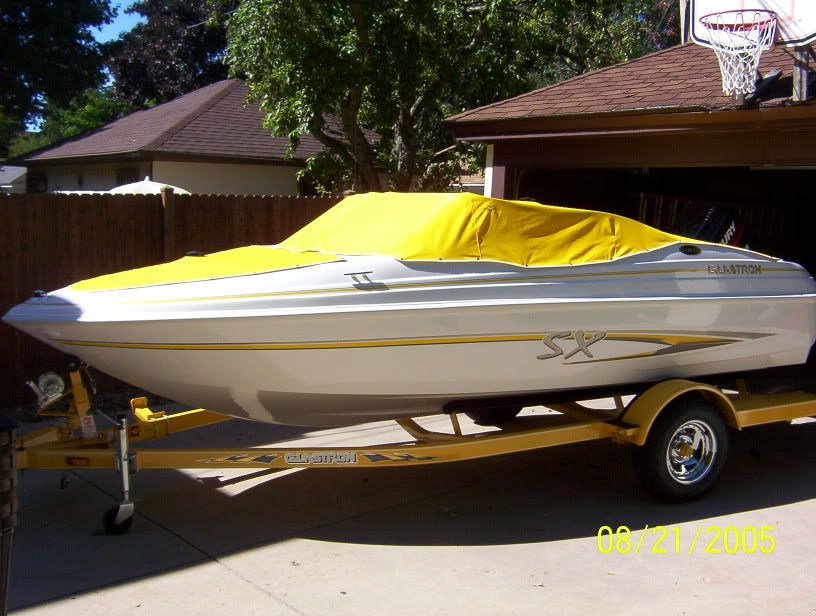Re: inboard or outboard?
1. I/O are more fuel efficient thatn 2 stroke outboards. Not when compared to the 4 stroke outboards though.
2. I/O don't have a motor sticking up and many think this cleaner look is more attractive.
3. I/O are generally a bit quieter, but it depends on how the exhaust is run and what kind of outboard you are comparing to. I have never considered any of my outboard boats "loud".
4. I/O takes up room inside of the boat with the motor hood. Outboard conversely has more room inside the boat.
5. I/O has holes in the transom below water line that if the bellows or outdrive boot split will let water in the boat. Outboard has no holes below water line.
6. I/O has universal joints which can and do fail and need replacement. The outboard doesn't have these additional u-joints.
7. I/O can only be run in the trim range, not in the tilt range. Outboards can be run with the prop about half out of the water as long as the cooling water pickup is getting water. This allows navigating shallow water easier.
8. Depending on the I/O, the motor may not be the easiest to access. An outboard if fully exposed once the hood is off. This can be done on the water. I had to do this once and was greatful for the full access.
9. Smaller outboards can be pull started with an emergency rope if the battery is dead. My 115 mercury has this feature although I haven't had to use it. The 70 HP johson I had before I did have to use it and was able to get the motor started.
10. To keep an outboard from getting freeze damage all you do is lower the motor. On an I/O they need to be winterized (drain water from block). This can mean that an outboard can be operated before the danger of the last freeze of the spring, or after the first freeze of the fall thereby extending the season a bit (fishing).
11. A 2-stroke outboard puts out more power per pound of motor weight than an I/O.
12. In my opinion the routine maintenance of an outboard is easier because the motor is more accessible. I would also say there is less routine maintenance required for the outboard although I wouldn't consider it much different in a typical boater's season.
13. Outboards you don't have to worry about bilge blowers, and there is less chance of a fire INSIDE the boat because there is no engine to provide an ignition source if fuel does happen to get in the bilge.
As far as what they can and can't do, they are pretty much the same. Both can pull skiers and tubes fine. My Sea Ray with a 115 outboard hauled a 250 pound slalom skier up just fine. For single tow they both work just fine. The I/O does provide a nice spot for a large tube at the back of the boat for getting from the dock to the tubing location. The outboard gets in the way of that. I fish, so I like the outboard for getting into shallower waters and not having to walk around a motor hood while working a fish. I feel it is easier to work around the outboard than the motor hood when fishing. As for speed, My 16 foot Sea Ray with 115 outboard makes 52 mph GPS with 2 on board.
Bottom line is that they both are fine and both do the job. You just have to look at the differences and decide what YOU prefer. I personally prefer outboards but I don't forsee ever having a boat bigger than about 18 feet. Once you get to 20 feet the I/O's definitely start looking more attractive to me.
Hope this helps























